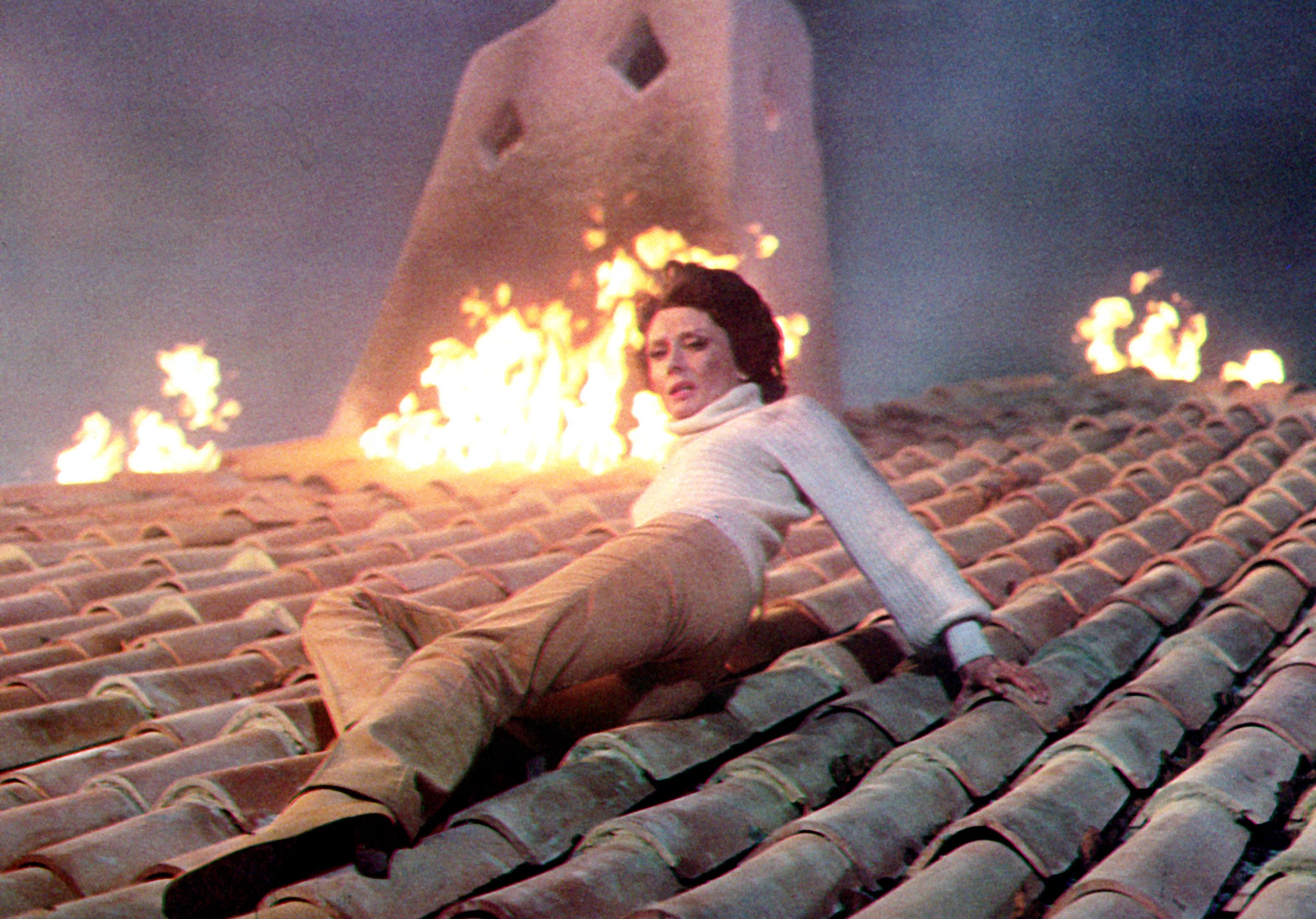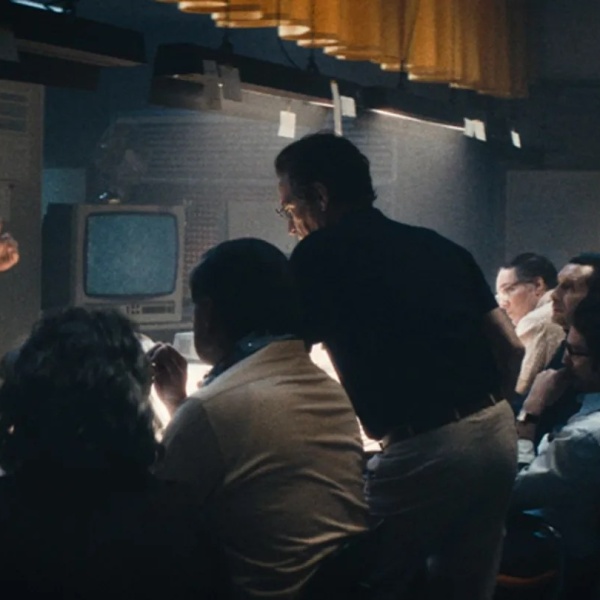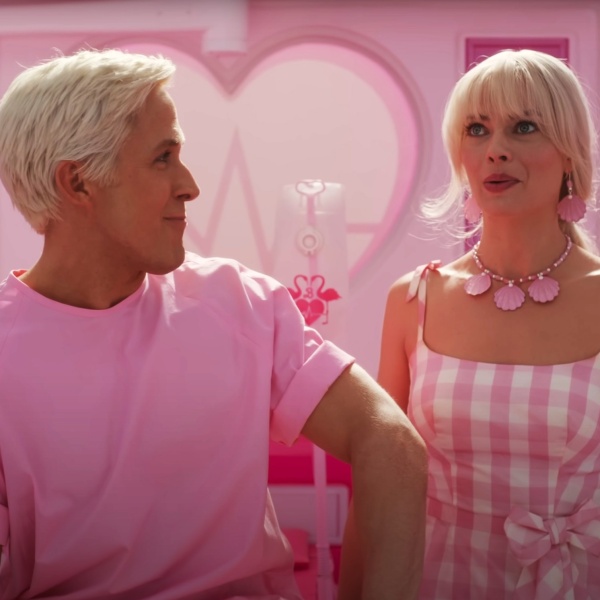What do you get when you cross a glossy all-star business drama with a kinky Italian horror flick, a German crime procedural, and “Fiddler on the Roof?” That insane mix may sound too good to be true, but it’s not — it’s a movie that actually exists. It’s called “Bloodline,” it was released by Paramount in 1979, and after years of intermittent accessibility on home video, it’s now available in a beautiful Blu-ray edition from the boutique label Vinegar Syndrome.
At the time of its release, “Bloodline” wasn’t a success by any criteria, but it was a major release thanks to an international cast consisting of Audrey Hepburn, Ben Gazzara, James Mason, Romy Schneider, Omar Sharif, Beatrice Straight (just a few years after her Oscar-winning turn in “Network”), Irene Papas and others. The fact that it was based on a novel by bestselling author Sidney Sheldon — who broke a record by selling the screen rights to his book for a then unheard of $1.5 million — and had a score by Ennio Morricone added to its high profile.
Sheldon’s popularity is undoubtedly a key reason the movie was financed in spite of its weirdness; another is the fact that half of the money came from a German tax shelter scheme in which the actual quality of the film was probably only of peripheral interest — the key goal was just to burn off the German funds by the end of the fiscal year. That said, someone at Paramount thought “Bloodline” had enough commercial potential to put some serious marketing muscle behind it; in 1979, the film’s image of a woman being strangled with a red ribbon was ubiquitous on enormous billboards and posters.

The movie’s basic premise of corporate scheming placed it in a once popular subgenre of literary adaptations like those based on Harold Robbins’ “The Betsy” and Jacqueline Susann’s “Once Is Not Enough.” When a pharmaceutical tycoon is murdered, his daughter (Hepburn) takes over the company, much to the chagrin of her cash-strapped cousins, all of whom want her to sell. When she refuses, everyone helping her is killed off by a mysterious assailant who is presumably a member of both the board and the family.
The business shenanigans and playful depictions of greed make “Bloodline” a kind of proto-“Dynasty,” but the movie doesn’t stop there. The body count plot brings in other genre elements, riffing on aspects of the German “krimi” films popular in the 1960s (there’s even a German investigator played by Goldfinger himself, Gert Fröbe, who spends most of the movie talking to an enormous computer) and Italian gialli movies of the kind made by Dario Argento, Mario Bava, and Sergio Martino.
The giallo influence is felt most profoundly in an odd subplot that runs along a parallel track to the business intrigue, in which mysterious figures are making snuff films that might or might not have anything to do with Hepburn’s professional struggles. The snuff scenes, from which the movie’s striking poster is derived, aren’t that extreme for a giallo. But for a big Hollywood studio release headlined by the star of “Breakfast at Tiffany’s,” they’re pretty rough stuff.
Even though giallo imagery was informing a lot of American movies at the time (“Eyes of Laura Mars,” “Dressed to Kill,” “Happy Birthday to Me”) audiences and critics weren’t comfortable with it in “Bloodline,” which was considered sordid and off-putting at worst and simply dull at best. Part of the problem was probably that “Fiddler on the Roof” component — at one point the film stops dead in its tracks for a flashback sequence detailing the origins of the pharmaceutical company set in a Jewish ghetto.
Although it’s all relatively faithful to the spirit of Sheldon’s novel (the biggest difference being that there’s simply more of everything in the book), audiences weren’t expecting such an odd mix of tones and traditions in one movie, and “Bloodline” sank at the box office and received scathing reviews.
Yet that very oddness is part of the movie’s charm; there’s something fascinating about watching the collision between the classy, restrained qualities of the film (dutifully executed by veteran director Terence Young, who had collaborated with Hepburn on a far more successful thriller, “Wait Until Dark,” several years earlier) and the lurid sex and violence of the snuff scenes. It’s like watching a trashy exploitation film directed by James Ivory, and while critics at the time complained about the movie’s disparate elements canceling each other out, the idiosyncratic mix of styles has aged well.

The same can be said for the film’s one inarguably great element, the score by Ennio Morricone. Unabashedly romantic as his compositions often were, it provides a whole other contradictory element to the movie, in which there’s very little actual romance on display (even though Hepburn and Gazzara were falling in love with each other off-screen). The fact that Morricone’s music isn’t conventionally “correct” for what we’re looking at isn’t a detriment — it’s just another of the many weird pleasures of “Bloodline” that make it stand apart from other movies both of its time and now.
One of the pleasures of Vinegar Syndrome‘s extraordinary Blu-ray release is the resurrection of an extended television cut of “Bloodline” that contains additional Morricone cues not heard in the theatrical version. This TV edit, which was evidently done partly at Sheldon’s behest to make the film hew more closely to the book, has been impossible to see in a decent copy for decades, so Vinegar Syndrome’s beautiful new scan is a real delight.
Even the theatrical cut has rarely been available in anything resembling a watchable transfer, but the Vinegar Syndrome disc contains a new 4K restoration taken from the original camera negative. It’s gorgeous — did I mention that the movie shares a cinematographer with “Lawrence of Arabia” and “Doctor Zhivago?” — and essential viewing for anyone interested in the odder nooks and crannies of 1970s studio filmmaking.






